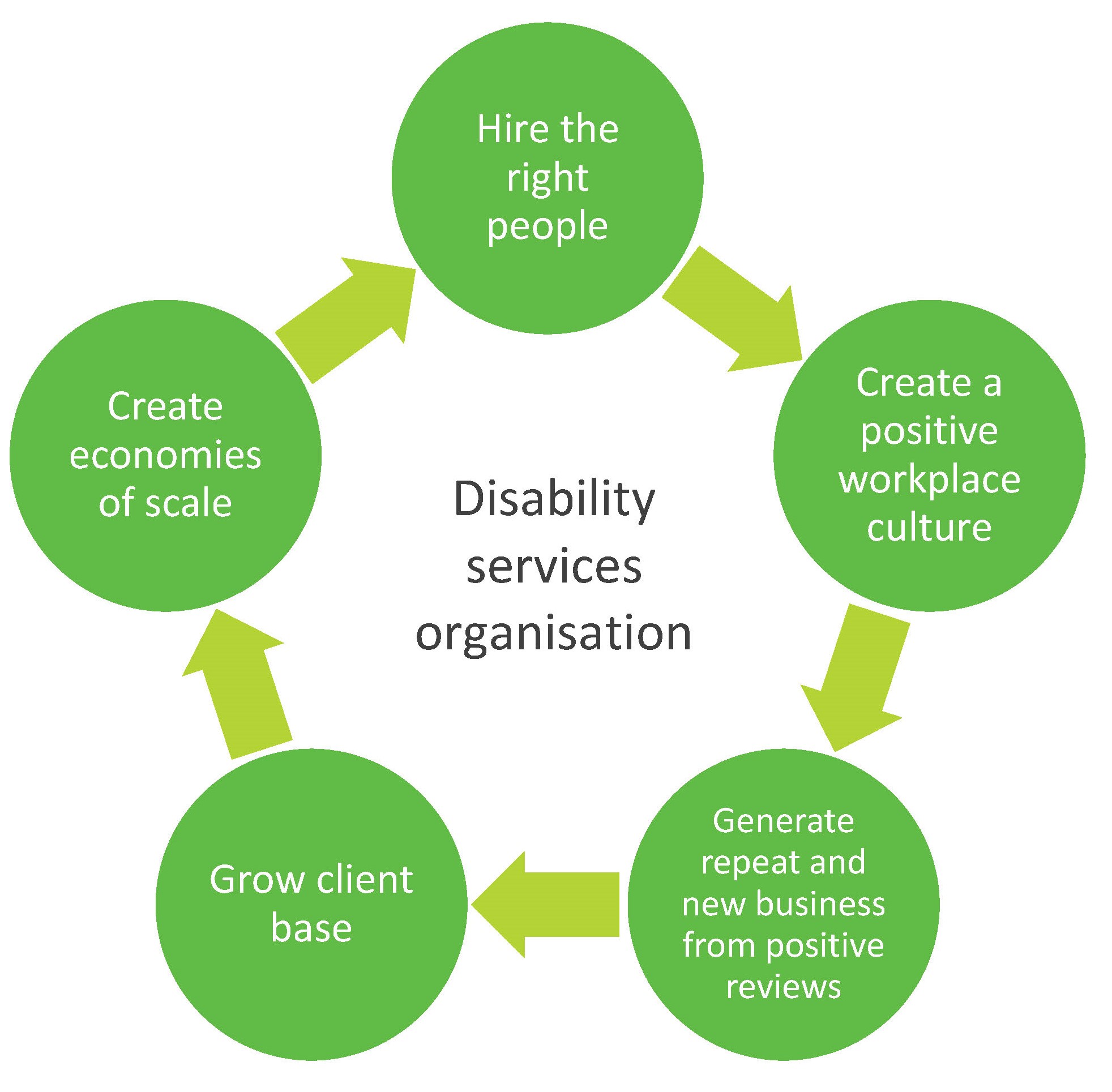What’s the magic formula that will help your disability services organisation keep growing to meet the needs in your community?
Surely, that’s a question that every Board member, CEO and senior executive has pondered in the past few years as the NDIS has led to a significant growth in demand for services to most organisations in the sector.
To answer this, we’re going to come back to the research of Jim Collins when he wrote Good to Great and developed the concept of the flywheel.
The concept is that in creating a great organisation, “there’s no single defining action, no grand program, no single killer innovation, no solitary lucky break, no miracle moment”.
Rather, it is more like “turning a giant, heavy flywheel. You keep pushing, and with persistent effort, you get the flywheel to inch forward, and with persistent effort you get the flywheel to complete one entire turn.”
“You don’t stop. You keep pushing. The flywheel moves a bit faster. Two turns… then four… then eight… the flywheel builds momentum.” At some point, it has almost unstoppable momentum.
In his book and research, Jim Collins takes examples from organisations as large as Intel and Amazon but also relates to not for profits and small business.
The flywheel concept is about strategic compounding – that one act builds on the other and takes discipline to continue in the same direction.
So, what’s the alternative?
Well, some organisations can get stuck in the doom loop. In this, “companies react to disappointing results without discipline – grasping for a new saviour, program, fad, event or direction – only to experience more disappointment. Then they react without discipline yet again, leading to even more disappointment.”
In my experience, this research is relevant to many organisation business models and concepts but is especially relevant to the fee for service delivery model now embedded for disability services organisations by the NDIS.
Below is an example showing what a flywheel might look like for an NDIS disability services organisation.

The steps in the flywheel aren’t a linear process of steps to take, but rather, as you read them, it’s like completing one step means the next step becomes almost automatic. Here’s an example.
The flywheel starts from hiring the right people. The right people in the workplace create a positive customer-centred culture. The right people and culture results in delivering exceptional service to customers. With exceptional service, customers will share with friends and family about their positive experience. That positive experience creates online reviews and word of mouth referrals which results in a growth in the client base. A growing client base will build economies of scale with systems and overheads, providing the ability to hire more of the right people, which starts the loop again.
This is one example, and your flywheel might look different to this, but notice the way that one step on the wheel directly leads to the other. Under good leadership, it’s almost automatic that hiring the right people creates a good culture. Satisfied customers will help you find new ones through word of mouth and online reviews. A growing client base can’t help but build economies of scale.
Notice as well that this model does not depend on the type of services you provide. It may well be that you want to move from delivering one type of service into another. A new program isn’t the magic solution to grow your organisation, but if you apply your existing flywheel concept to a new program or service, then in time, it could become that.
As an example, I’m working with a provider now who wants to move from support coordination and plan management services into allied health. Looking at this new service through the flywheel concept can help the organisation to see that they already have a flywheel with the existing services, and they can transfer the learnings and process there into the process they will need to build the same flywheel model but applied to a different type of service.
There’s a discipline required in understanding and following the flywheel concept. You can’t do this for one month or a couple of months and hope to get results. It’s about having discipline to regularly follow your flywheel concept for years on end – pushing in the same direction.
Once you have created the steps on your own organisation’s flywheel, you might consider rating your organisation’s performance on a score of 1-10 for each step in your flywheel. If one part is at a 3 out of 10 while all the other points are an 8-9 out of 10, then the part which is a 3 is taking momentum out of your business flywheel and needs to be fixed – whether that is a people, system, technology or other issue.
The flywheel concept is a good model for NDIS disability services organisations. There is a natural flow of customers from intake to service delivery to exit, and a need to replenish customers who leave, or to grow. Reducing blockages and freeing your flywheel to run smoothly as each day you push on it, will help to grow your reach and impact.
If you are interested in the concept of the flywheel and want to take steps to better define it in your own organisation, then you might be interested in reading Jim Collins’ book Good to Great or the smaller paperback Turning the Flywheel.






